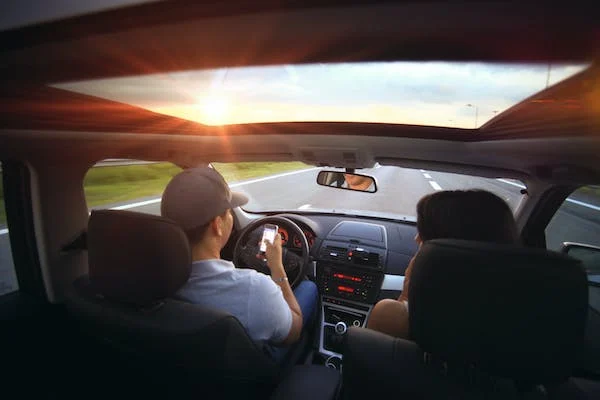Brake Checking: A Reckless and Illegal Driving Behavior
Image source: Pexels.com
Driving while monitoring your brakes is against the law and dangerous, as it increases the risk of major accidents and injuries. I’ll define brake checking, discuss why individuals do it, and provide prevention tips in this blog post.
What does brake checking entail?
Brake checking is the intentional application of force or rapid braking in front of another car, usually with the intention of slowing down or stopping. Another way to check your brakes is to slam on the brakes or change lanes without indicating. In order to intimidate or annoy another driver, or just to vent anger or irritation, brake checking is frequently done as a kind of road rage. Brake checking can also be done as a practical joke, to frighten or vex someone, or to deceive insurance companies into paying more by rear-ending them.
What is the process for checking brakes?
Brake checking operates by taking advantage of motion and inertia in physics. A vehicle’s momentum, which is determined by multiplying its mass by its velocity, is what gives it its current speed. When a car brakes, it applies force in the opposite direction of motion, which decreases momentum. The road surface, tires, and brakes all feel this force, which generates heat and friction. More force and friction are required to halt a moving vehicle the quicker it is traveling.
Both vehicles experience an abrupt and unexpected change in momentum when one brake checks the other. The car behind it must slow down even more quickly to avoid colliding with the brake-checking vehicle, which rapidly loses velocity. This can be more forceful and frictional than the brakes, tires, and road surface can provide. The following car may skid, slide, or lose control as a result, possibly colliding with other cars or objects.
Why is brake inspection prohibited and risky?
Checking your brakes might result in a series of accidents and injuries, which makes it risky. A driver who brake checks another car runs the danger of getting struck from behind by the oncoming car. or making the car in front of you swerve, lose control, and collide with other cars or objects. Other drivers may respond erratically or become panicked as a result of being startled or distracted by braking checks. Checking your brakes could cause fatalities or severe injuries like whiplash, brain trauma, spinal cord damage, or even death. In addition, brake checking can harm the cars involved, including the airbags, tires, bumpers, and brakes.
Brake checking is prohibited by law because it is against both traffic laws and road safety regulations. According to the definition of aggressive driving, which is “the operation of a motor vehicle in a manner that endangers or is likely to endanger persons or property,” brake checking is one type of aggressive driving.
Since assault is defined as “the intentional creation of a reasonable apprehension of harm,” brake checking can also be considered a type of assault. Depending on the gravity and result of the occurrence, brake checks may result in fines, penalties, license suspension, or even criminal prosecution.
How can brake checking be prevented?
Driving cautiously and politely on the road is the greatest strategy to prevent brake checking. Here are some pointers to remember:
- Depending on the pace and traffic circumstances, maintain a safe gap of at least two seconds or more behind the car in front of you. This will allow you adequate time and room to respond and apply brakes as necessary.
- Other drivers may brake check you or take other punitive action if you tailgate, honk, flash your lights, or act rudely toward them.
- Even if another driver is traveling too quickly, too slowly, or too near to you, you should never brake check them. This will only make things worse and put you and other people in danger.
- Try not to get upset or freak out if someone brake checks you. Aim to reduce your speed cautiously and gently, and steer clear of adjacent lanes and the car in front of you. To avoid the brake checker, try to shift lanes or take an exit.
- When engaging in a brake check event, make an effort to obtain the make, model, and license plate number.
- and the color of the car that did the brake check on you. Make a report of the occurrence and notify the police if there are any injuries or damage. Obtain the statements and contact details of any witnesses if there are any. Save any dash cam film you may have and use it as proof.
In summary
Brake checking is an imprudent and forbidden driving practice that can result in catastrophic collisions and fatalities. You can prevent brake checking and make the road a safer place for everyone by driving sensibly and courteously.





0